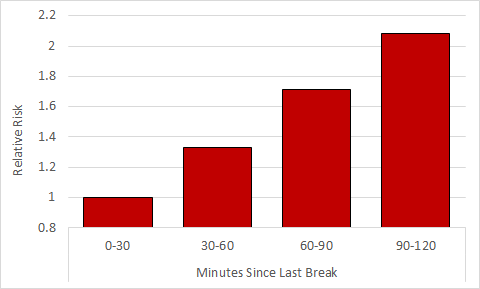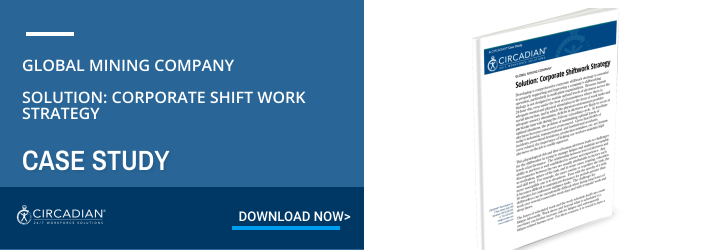It's a common question, but there’s no one-size-fits-all answer. The frequency and duration of work breaks can have a profound effect on productivity, employee well-being, and workplace safety. In this article, we'll explore how often should you take breaks at work, focusing on different types of work schedules and their impact on health and performance. Whether you're a shift worker, desk worker, or in a physically demanding job, understanding the benefits of breaks can help optimize your workday.
How Often Should Shift Workers Take Breaks?
When it comes to shift workers, break schedules can vary depending on the company, state regulations, and the nature of the work. For most 8-hour shifts, employers typically allot two short breaks (10-15 minutes) along with a 30-minute meal break. On 12-hour shifts, the pattern often includes three short breaks plus a longer meal break. However, these break structures are not federally mandated, except for certain situations like those involving nursing mothers.

Figure 1. Trend in Relative Risk between 15-Minute Breaks
What Does the Law Say About Breaks?
In the U.S., fewer than half of the states require employers to provide meal breaks, and the rules surrounding breaks can vary significantly by state. For instance, in California, employers are required to provide a 30-minute meal break for every 5 hours worked, and a 10-minute break for every 4 hours worked. In contrast, other states have no such laws, leaving it up to the employer’s discretion.
The Case for Frequent, Short Breaks: Why Taking More Breaks Can Benefit You
While the typical break schedule might work for some employees, there’s evidence to suggest that more frequent, shorter breaks could be more effective in improving both performance and safety.
1 - Increased Focus and Productivity
Taking breaks every couple of hours helps prevent mental fatigue. Instead of waiting for a long meal break or the end of a shift to feel relief, workers who take short breaks throughout the day report feeling more energized and better able to focus when they return to their tasks. This can translate to greater efficiency and higher productivity levels.
2 - Decreased Fatigue and Boredom
It’s natural to feel fatigued or mentally drained after working for a prolonged period. Short, frequent breaks allow workers to step away from their tasks, refresh their minds, and return feeling more focused. A quick walk, stretching, or grabbing a healthy snack can help restore energy levels, preventing burnout during long shifts.
3 - Improved Morale
Allowing employees to take regular breaks shows that the employer values their wellbeing. When workers feel cared for, it boosts job satisfaction and overall morale. This can have a positive impact on retention rates and reduce employee turnover.
Safety Implications of Taking More Breaks at Work
Frequent breaks are not only beneficial for productivity and morale but are also crucial for workplace safety. Research has shown that taking breaks can significantly reduce the risk of workplace injuries.
How Often Should You Take Breaks at Work? The Best Practices for Different Shifts
For 8-Hour Shifts
For workers on an 8-hour shift, the optimal strategy is to take breaks every two hours, with one longer meal break and 2-3 shorter breaks of 10-15 minutes. This schedule allows workers to rest, refresh, and stay focused throughout the shift, reducing fatigue and improving safety.
For 12-Hour Shifts
Longer shifts, such as 12-hour schedules. Ideally, employees should take 3 short breaks and one longer meal break. The strategy of taking breaks more often can help counteract the mental and physical strain of working long hours.
For Night Shifts
Night shifts are notoriously difficult for workers due to the circadian rhythms of the human body. In such cases, taking shorter, more frequent breaks and shortening the meal break can help employees stay alert and engaged. Research suggests that providing multiple breaks during night shifts can reduce the adverse effects of fatigue and boost performance.
Additional Tips for Maximizing Breaks at Work
Take Active Breaks: Use your breaks to get up, stretch, or walk around. Physical activity, even in small doses, can improve circulation and reduce the risk of musculoskeletal problems.
Hydrate and Snack: Drink water and have a healthy snack during your breaks to maintain energy levels. Avoid sugary or overly salty foods that might make you feel sluggish later on.
Disconnect: Step away from your computer, phone, or work station entirely. Disconnecting mentally from your tasks is key to truly refreshing your mind.
Mind Your Posture: Use breaks to improve your posture. Stretching your neck, shoulders, and back can help reduce the risk of chronic pain associated with sitting or standing for long periods.
Conclusion: How Often Should You Take Breaks at Work?
The ideal frequency for taking breaks at work depends on various factors, including the type of work you do and how long your shift is. However, evidence suggests that frequent, short breaks every 2-3 hours can significantly improve productivity, reduce fatigue, and lower the risk of injury.
Employers who implement a break schedule that encourages short, regular breaks are likely to see a happier, healthier, and more productive workforce. So, if you’re wondering how often you should take breaks at work, the answer is simple: take breaks frequently and take them often! Your body and mind will thank you.
By following these strategies, workers can optimize their workdays for both health and performance, ensuring that both their physical and mental well-being are sustained throughout their shifts.





